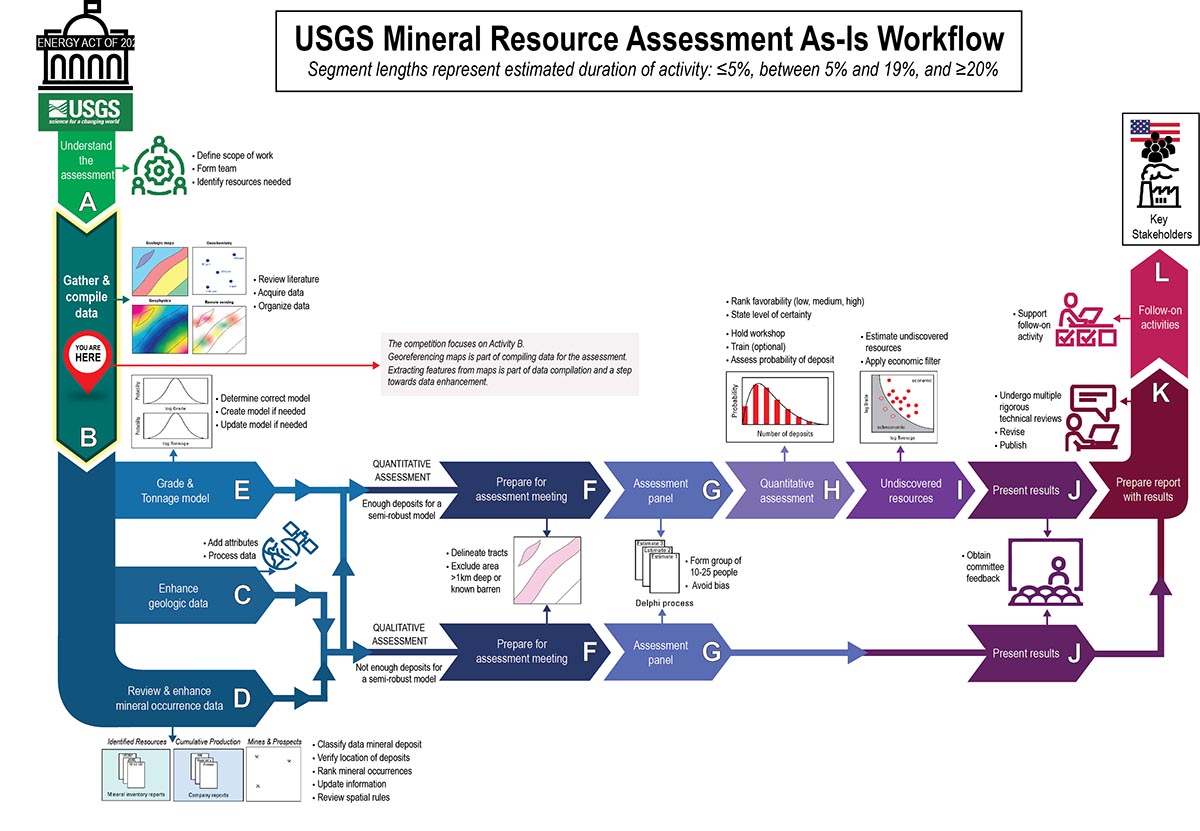The USGS receives requests for mineral resource assessments from Congress, the Bureau of Land Management,
the U.S. Forest Service, and others. Collaborating with state geologic surveys and industry, using data
from a variety of sources, conducting field work, employing mineral deposit models, and working in highly
skilled teams, the USGS develops final assessment reports and data that range from defining prospective
areas for a mineral commodity(s) to developing quantitative models of ranges of estimated amounts of
undiscovered mineral resource(s) and potential economic value of those resources.
The USGS conducts both qualitative and quantitative assessments, dependent on a) customer needs and b)
available geologic and geochemical data. Customers use both types of assessments for land-use planning
and decision-making. Customers request qualitative assessments when they need a mineral potential map
with tracts labeled as high, moderate, or low potential for select mineral resource(s). In other cases,
customers require quantitative assessments to obtain probabilistic estimates of amounts of potential
resources to support economic planning. Quantitative assessments require sufficient models of ore tonnage
and grade from known deposits as analogs of potential resources in undiscovered deposits. When tonnage and
grade models are not available, the USGS can only provide qualitative assessments.
The USGS measures the success of its high-quality mineral assessment efforts by report citations and
references and new sources of critical materials identified.
The image below shows the current USGS mineral resource assessment workflow from receipt of need, to
publication and release to customers. The workflow includes creation of both qualitative and quantitative assessments.

Baseline geologic, geophysical, and geochemical data are essential for both qualitative and quantitative
mineral assessments because these data help USGS geoscientists identify geologic environments where
minerals of interest are most likely to be concentrated. Current methodology requires significant manual
efforts to 1) locate relevant data (maps and associated data), 2) extract those datasets, and 3) place
those maps/data in spatial context) (steps A-D in the above figure). USGS can only complete quantitative
assessments if sufficient data is available for the grade-tonnage model (E in the above figure).
Capturing the location of potentially permissive geology and attributing those units to better
identify truly permissive geology are currently very time-consuming efforts, and thus are part of
several processes that could benefit from automation.